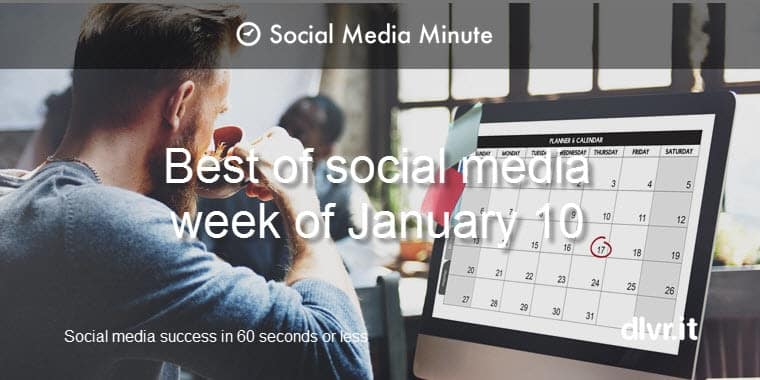
The secrect to maximizing ROI with promoted content ads on Facebook, Twitter and dlvr.it
For the past 10 years, Google AdSense has been the go to place for small businesses advertising – its proven, easy to get started and simple to use. Twitter, Facebook and dlvr.it have recently launched small business advertising platforms to help reach audiences across the social web.
Quick links to each program:
Facebook for business
Twitter for small business
Dlvr.it Promoted Stories
With AdSense, you know what to expect when advertising. You know if you spend $50 in clicks, you can pretty much estimate your return. When you start anything new, including promoting content through social networks, it is a gamble. Will it work? With the increasing amount of time prospects are tethered to social networks, it is prudent business to test the ad performance across social.
How do you reduce the risk of promoting content in social media? I have used this simple, yet effective plan, with hundreds of clients. I included the step-by-step approach along with a infographic at the bottom that visualized the process.
Step 1. Understand how prospects use each platform
Google AdSense is fueled by people looking to fill a particular need (i.e. clothes, food, shelter, directions). Social networking is fueled by the status updates, sharing, and connecting. Your prospects are using search engines very differently then social networks.
This means promoted content ads in social media require a different approach to the creative.
- AdSense creative: “<insert your company name> has what you are looking for.”
- Promoted content creative: “Hi, how are you today. What can I help you with?”
Promoting content in social starts with creating compelling content that moves prospects to invite you into their lifestream.
Putting this to work.
- Create content that addresses a customer’s need. Imagine a customer walking into your business, what questions did they ask you before they bought your product/service? Create a blog post that addresses that question.
- Make content searchable, snackable and shareable.Customer’s attention is fragmented across devices, social networks, websites, blogs, search engines, apps, etc. Create a piece of content ONCE and map where you send it as well as where it might be shared.
- Searchable: optimize the blog post for search
- Snackable: consumers are on the go, consuming content in small bits through some sort of lifestreaming interface. Make your blog post easy to scan – use bullets, indents, big sub headlines and visuals.
- Shareable: Don’t make the headline too long so it gets cut off in Twitter’s 140 characters but make it compelling. Enable your blog with all the easy sharing buttons
- Set your content free. The last mile of content creation is distribution. Often time’s distribution is an afterthought. Most of our prospects media consumption habits have shifted, we have to shift with them. We have to meet our consumers where they are. It is no longer, ‘build it and they will come.’ We have to be invited into their lifestreams. You do that by being where and when they are on Twitter, Facebook, LinkedIn, etc. (learn how dlvr.it can help scale syndication to social.)
Social media is a real-time focus group at scale. It can help you determine very quickly and accurately what to use in your promoted content programs.
Step 2. Measure the success of your content
I believe in simple metrics. Especially as a small business, you don’t have time to pour through screens of data trying to figure out how to move your business forward. If you’re like me, I want to digest a few key metrics that will have the biggest impact. There are three key metrics to help you reduce risk when promoting content in social media. Measure actionable data that has the biggest impact on helping you create compelling content that moves prospects and lowers your media cost.
- Content Analysis
- Create a list of headlines ranked by activity generated (clicks, retweets, sales)
- Continue with what works in paid media (see more on this below)
- Change and republish low performing stories (try a new headline)
- Demographic Analysis
- Discover what resonates with different social groups
- Determine what content to create for each group
- Direct paid media to the exact audience
- Sentiment Analysis:
- Surfaces future story ideas and direction
- Serves as a signal for future product, sales and marketing ideas
- Supplies keyword and category data to inform paid media
Step 3. Grow with promoted content
At this point you should have found 1.) What content performs best 2). Who it resonates with 3). What categories and keywords provide the best signal for you to buy media against
Check list for paid media buying
- Assemble the assets
- Targeting: Keyword, category, demographic
- Content: Re-purpose what resonated with earned & owned audiences
- Add tracking link appends (example UTM codes with Google Analytics)
- Measure. Apply the same measuring techniques from Step 2 above.
Summary
- Distribute. Syndicate your content where your customers are
- Measure. Social media is the new focus group. A few key metrics can minimize your exposure
- Grow. Use what content resonates with your audience and use it to attract a similar audience through social ad buying
Related Posts
IN THIS ARTICLE




